19 May
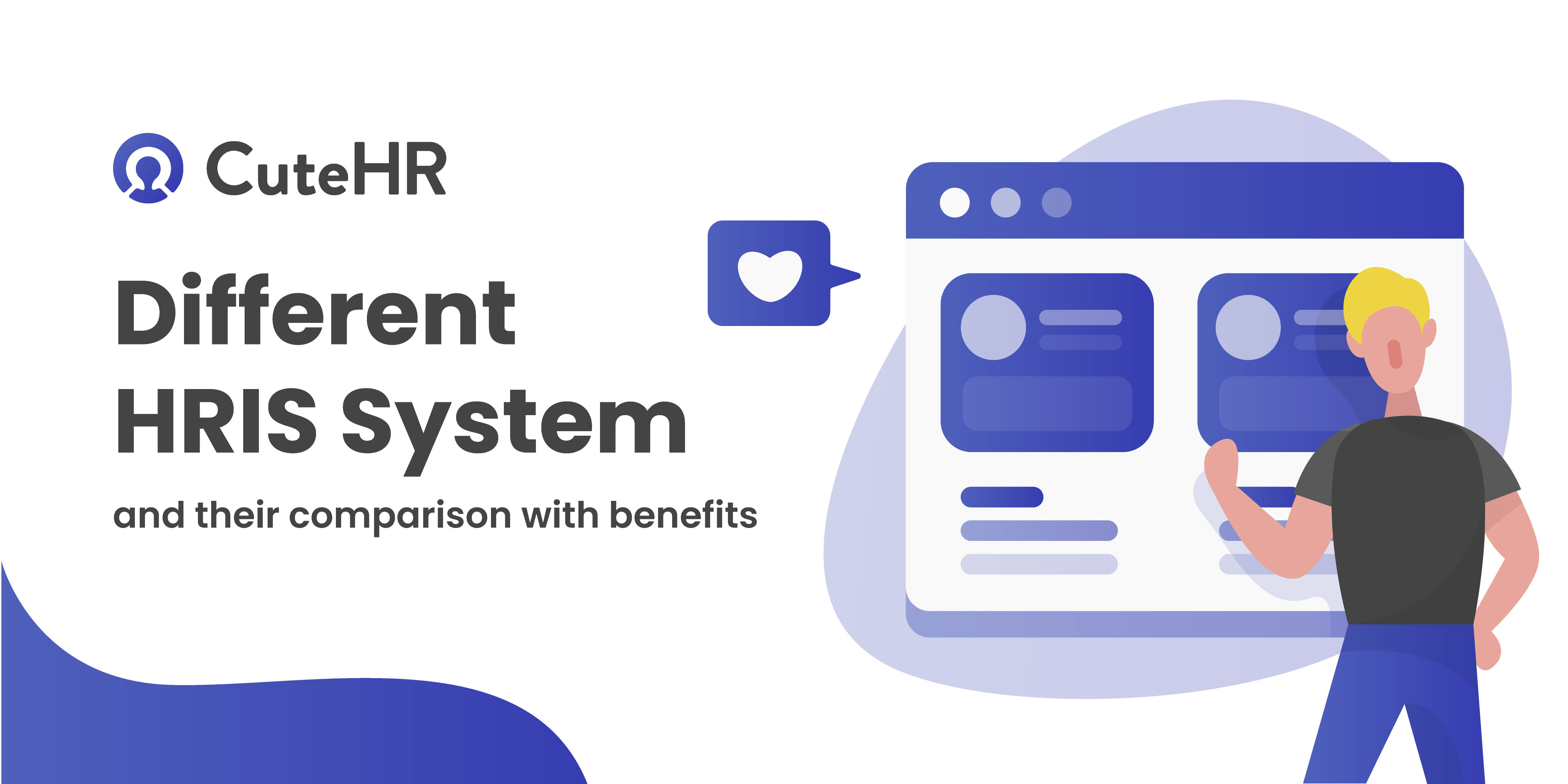
HRIS, HRMS, and HCM: When you’re new in a system, you tend to get so overwhelmed with so many activities. You tend always to lose track of time and never get enough done on time despite having enough time. As time goes on, you might have to depend on the use of sticker notes to remind and keep tracks of all activities. This problem might happen even if you have always considered yourself as someone who has an outstanding talent when it comes to keeping track of all the happenings around you. Now this problem is one faced by many individuals who have nothing but their little world to manage. It’s sure other people with more significant responsibilities will experience this too.
One of the reasons people get secretaries is for ensuring that they don’t get overwhelmed and make sure they organize productive meetings. Another is to have a good record of administration. Now imagine having a secretary thousand times more efficient, without all the problems of paper record-keeping, having unparalleled time and resource management ability.
Table of Contents
What is Human Resource Management System (HRMS)?
HRMS has now become the ultimate manager of everything that involves human resource of many of the worlds large and small scale companies. With people finally coming to terms with just how useful technology can be when applied right. When it comes to the automation of repetitive and time-consuming activities associated with human resources, HRMS is nothing short of perfect.
Companies can’t exist without its employees; therefore, we can say employees are the lifeline of every company. Every successful company must have the best way of managing their most vital resource. Generally, management gets increasingly complicated, with a rising in the number of employees.
HRMS (Human Resource Management System) is a cloud-based software. It covers the full spectrum of tasks associated with the HR of a company. It enables businesses to automate many of the functions involved in human resource management. This system improves HR efficiency by standardizing many different processes and also lightens the workload of the department.
Productivity is vital especially in the human resource sector where most of the job is to function as smoothly as possible. The various functions performed by HRMS are common to many organizations and there are four primary benefits. Let us understand these primary benefits.
What are the benefits of an HRMS?
HRMS comes with some main key features that enable the HR team, process a good work culture in any organization. Some of the key features and benefits associated with HRMS are
- Payroll processing
- Time and Labour Management
- Human resource management
- Benefit administration
- Data management
- Employee self-service
- Determining the amount of resource needed for a particular task
- Management of employee information

Let us find more into these HRMS features guarding all HRIS and HCM practices.
Also Read: Key Features you must have in your HRMS
Payroll processing
Payroll processing is an extremely significant activity for both an organization and its employees. Information concerning the payroll of workers in an organization is one of the core reasons why an individual works for an organization. HRMS has provided the invaluable service of automating the payroll process. It guarantees that payroll function is carried out on time and without any errors. The payroll function works in conjunction with work hours and attendance data. The payroll module can automatically compute payment totals and deductions, such as income tax, before proceeding to generate employee paychecks and task reports.
Time and Labour Management
The time and labor management module are responsible for compiling and evaluating employee work information. Data recorded by this Module facilitates payroll processes. Employees’ daily entry and exit time are critical in determining their competence. The data taken from the time tracker systems and data processed through payroll module allows the time and labor management to present useful data, depicting the utilization of labor within the business.
Human resource management
This module of HRMS is designed to make data and analysis as simple and effective as possible. The human resource management module enables the human resource department to efficiently manage its human labor resource by coordinating employee demographic data with data on the business technology, production, future goals and more. Also, data obtained by this module determines the qualification of each employee for a particular task. Employing the right person for a given job has a significant role to play if a company is to be successful, and this has been made easy by analysis of data obtained by this module.
Benefit administration
Human resources department is responsible for supervising and adjusting employees management with a variety of benefit programs. These programs can be diverse and customized as a business chooses. The applications range from employee welfare, like health insurance and pension plans, to programs geared towards making a profit, like profit sharing and stock option. All these have been made easy by using the benefits administration module of HRMS.
Other essential functions performed by HRMS includes:
Data management
The building of a secure and easily accessible database has made it possible for a business to function more efficiently. The data management module of HRMS keeps and track all employees’ information to enable smooth workflow. This module has overcome the disadvantage of conventional data storing such as paper records and spreadsheet and enable businesses to use document managers to save and share data online.
Employee self-service
This module allows employee easy access to their data. Employee self-service will enable them to perform some human resource activities over the system. Employees may question their attendance record from the system without asking the information from human resource department.
Determining the amount of resource needed for a particular task
The data collected by HRMS and its quick analysis of these data has made it possible for easy estimation. This data collection is to achieve the desired business results which can either be long or short term.
Management of employee information
HRMS keeps a record of accurate employee information in employee management systems. This record has made it possible to obtain data on employees at high speed. Some of the data includes name, gender, date of birth, joining date, contact information telephone numbers, email, department information, grade, Previous employment information, and any other useful information.
Components of HRMS
The various components of HRMS enable its performed functions. These components consist of
- Human resource information system(HRIS)
- Payroll
- Time labor management(TLM)
- And sometimes human capital management(HCM)
Therefore, HRMS can be described as
- HRMS=HRIS+payroll+TLM or
- HRMS+HRIS+payroll+HCM+TLM
Let us take an elaborate discussion on what these components are, their functions and benefits.
What is HRIS (Human Resource Information System)?
HRIS is a component of HRMS. It is the intersection of human resource information technology through human resource software. It may also be viewed as a way, through software, for big and small businesses to take care of several activities relating to the quantitative information of employees and to track productivity.
Data obtained using HRIS can be used to plan human resource cost more effectively. Additionally, to manage and control HR without needing to allocate many resources towards them. HRIS also leads to increase efficiency when it comes to deciding on human resource. These decisions increase the quality of results and the productivity of employees.
Also Read:
What are the functions of an HRIS?
There are many functions that make HRIS a better system to improve HR processes.
- Human resource and payroll functions to rank employees and award raise or promotions.
- Further application of HRIS includes gathering of data over long periods to review and determine the productivity of each employee. This data gathering is to justify the termination or discipline of a sick performing employee.
- HRIS also keep a record of rate, salary, hours of overtime worked, number of professional development hours taken and age.
- HRIS has reduced cost and time spent on manual data analysis allowing human resource managers to focus on making decision and projects.
What is HCM (Human Capital Management)?
HCM (Human Capital Management) has to do with how companies organize and treat their employees. Employees are assets that can be invested in and managed to maximize their business value. Some organizations provide some value-added incentives or privileges such as health insurance and even going as far as spending their money and resource to train new employees.
HCM has become an essential part of increasing the efficiency of workers, and it increases the productivity of a company. Therefore, it has a vital role to play to improve the richness of a company’s human resources. HCM, in conclusion, is thus defined as the process of obtaining, training, managing and retaining employees to increase efficiency.
Difference between HRMS, HRIS, and HCM
When comparing HRMS, HRIS and HCM it becomes seen that there are differences between the three. Though so many vendors and software developers use them interchangeably, however, there are differences. First, let’s look at what do these three acronyms stand for?
- HRMS (Human Resource Management System)
- HRIS (Human Resource Information System)
- HCM (human capital management)
From their meanings, we can see that both HRMS and HRIS refer both to software systems, while HCM refers to a discipline or field. HRMS is often an extensive umbrella. A modern HRMS can potentially incorporate any and every kind of human resource related software application. It can contain more dynamic data such as time off days, performance management information, and so on. On the other hand, HRIS provides more static data such as name, addresses, social security numbers, and payroll figures. This definition shows that HRIS is a component of HRMS because HRMS contains all elements of HRIS.
HCM software covers a wide range of core human resource functions like HRIS and HRMS. It also has increased capabilities to manage strategic human resource functions and report the analytics associated with the data.
HCM, unlike HRIS and HRMS which typically stick to core human resource needs. HCM covers a wide range of core and strategic human resource functions for even the largest enterprises.
HRIS, HRMS And HCM Tabular differences.
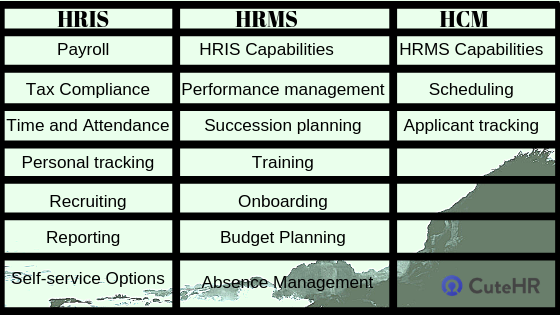
| HRIS | HRMS | HCM |
| Payroll | HRIS Capabilities | HRMS Capabilities |
| Tax Compliance | Performance management | Scheduling |
| Time and Attendance | Succession planning | Applicant tracking |
| Personal tracking | Training | |
| Recruiting | onboarding | |
| Reporting | Budget Planning | |
| Self-service Options | Absence Management |
Conclusion
An essential thing to consider in choosing which of the three to use is to evaluate the company’s needs. If your business or organization is planning to adopt a new HRMS then you must check the top hr software pricing and review for 2022. Afterward, determine which of them is the right fit for the company. No matter the size of your business, all these tools are useful in managing activities. It is up to the organization to decide the goal it wants to achieve with the system and which is most beneficial.
Using systems that are designed to unify many different aspects of human resources at one pace increases efficiency and improves usability. It reduces operational costs and bolsters security exponentially. As a business grows and more needs arise, having an intuitive human resource system that can cope with the demands is a must.

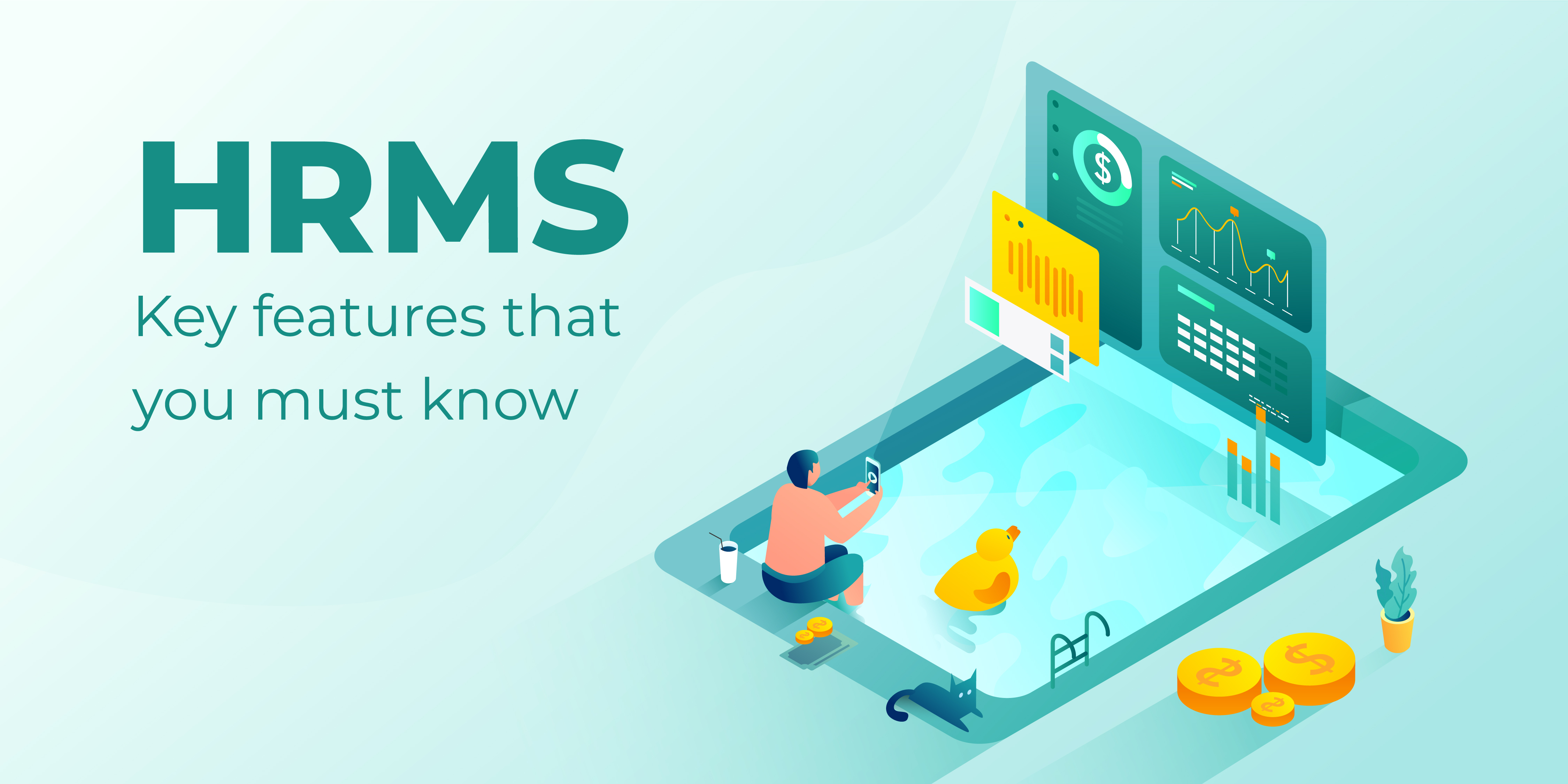
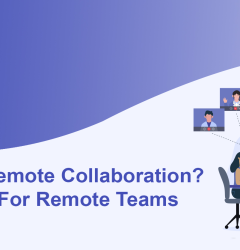
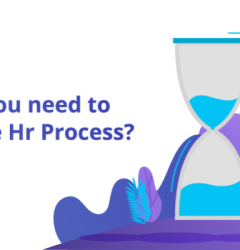









Snehil Prakash